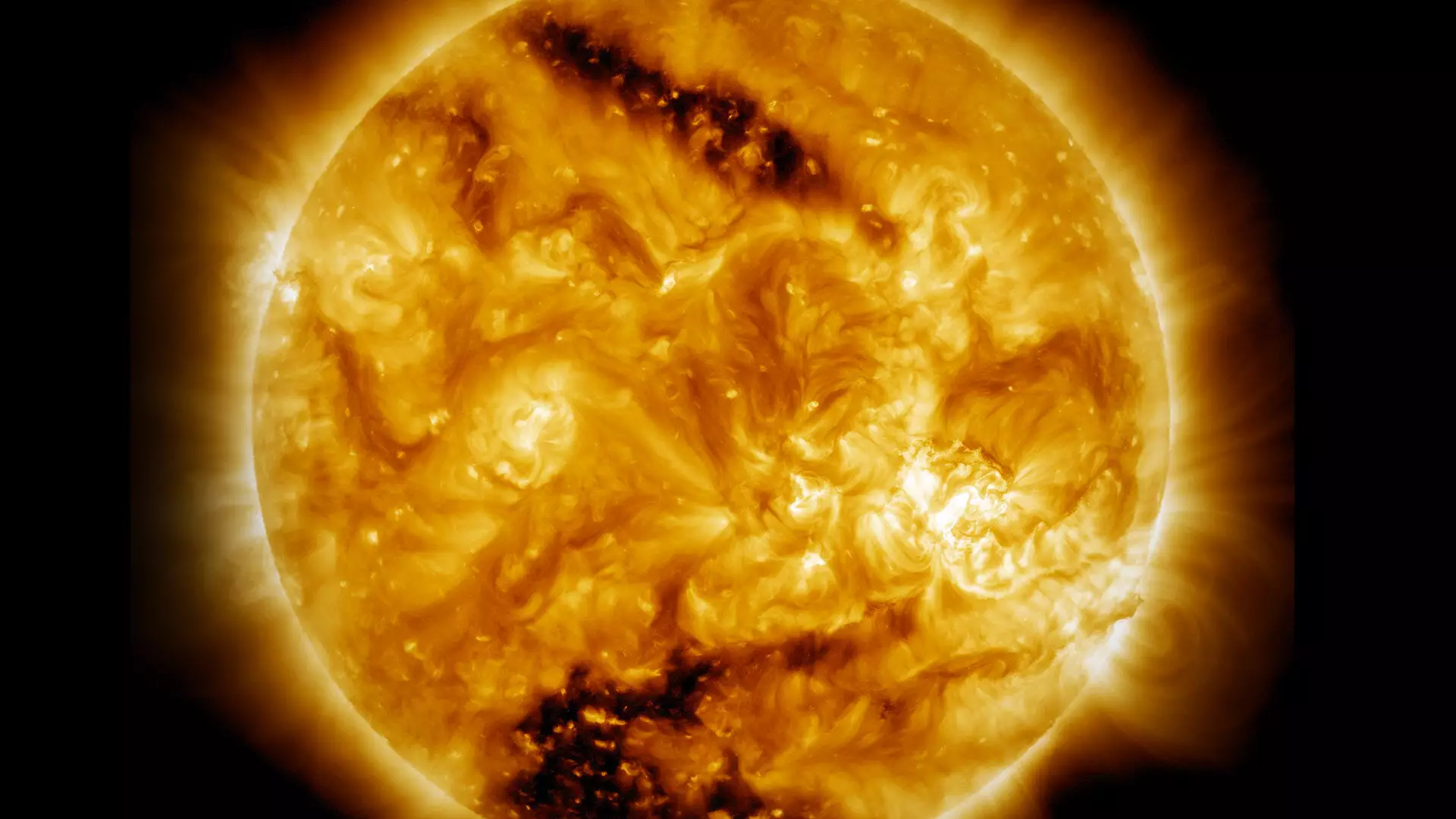The sun, a fundamental star for life on Earth, holds many secrets within its layers. While it shines brilliantly, casting life-giving warmth and light on our planet, a perplexing discrepancy has confounded scientists for decades. The surface temperature of our sun hovers around 10,000 degrees Fahrenheit; however, its outer atmosphere, known as the solar corona, reaches an astonishing 2 million degrees Fahrenheit—approximately 200 times hotter. This enigmatic transition from the sun’s surface to its outermost layer is a cornerstone of solar physics that has prompted investigation since the high temperature of the corona was first observed in 1939.
Since the initial discovery, researchers have striven to delineate the mechanisms responsible for this unexpected thermal behavior in the solar corona. Numerous theories have surfaced over the years, yet none have been conclusively validated or widely accepted. Understanding this phenomenon is crucial, as it offers insights not only into solar behavior but also into broader astrophysical processes. The complexity of this research mirrors the intricate dynamics of the sun itself, often leading scientists down winding paths of theory that continually require reevaluation in light of new experimental findings.
Recently, a team spearheaded by Sayak Bose from Princeton Plasma Physics Laboratory has made compelling strides in addressing this long-standing mystery. Their research posits that reflected plasma waves may significantly contribute to the heating of coronal holes—regions characterized by low particle density and open magnetic fields projecting into space. This research, documented in The Astrophysical Journal, advances our comprehension of the solar corona’s heating phenomenon and provides a potential explanation for the high temperatures witnessed in coronal holes.
Bose’s assertion that plasma wave reflection could elucidate the heating mechanisms provides a pivotal insight. The synthesis of theoretical physics and laboratory experiments in replicating conditions akin to the solar atmosphere is an innovative approach towards solving this conundrum.
Diving into Alfvén Waves
The crux of Bose’s analysis revolves around Alfvén waves, named after the Swedish physicist Hannes Alfvén, whose work has been foundational in the field. These waves, which can be likened to the vibrations arising from a plucked guitar string, result from oscillations within magnetic field lines that unfurl in the plasma of the solar atmosphere. In their experiments, the researchers employed the Large Plasma Device (LAPD) at UCLA, a sophisticated tool designed to mimic the conditions of the solar corona.
During these experiments, they succeeded in demonstrating that when Alfvén waves traversed regions of fluctuating plasma density and magnetic field strength—conditions paralleling those found around coronal holes—reflection occurred. This revelation is monumental as it validates theories that have long been speculated upon. The interaction between outward-moving waves and their reflections leads to turbulence, a mechanism believed to facilitate the significant heating of the corona.
The study embodies an exemplary marriage of experimental and computational physics. Jason TenBarge, a key contributor to this research, underscored the historical difficulty of verifying the hypothesized wave reflection in both laboratory settings and observational contexts. Their innovative approach, not only confirming wave reflection but also establishing its sufficiency to heat coronal holes, positions the research as a landmark achievement in solar physics.
By aligning empirical experimentation with advanced computer simulations, the researchers cross-verified their results, reinforcing the credibility of their findings. This dual methodology exemplifies the nuanced and multifaceted nature of scientific inquiry, where cross-disciplinary collaboration can yield profound discoveries regarding complex natural systems.
Collaborators from esteemed institutions, including Princeton University and Columbia University, contributed to this multidisciplinary effort. The strides made by Bose’s team reflect not only a breakthrough in understanding the sun’s corona but also an overarching movement towards more comprehensive insights in astrophysics.
As our knowledge of such celestial enigmas expands, it paves the way for future investigations into critical questions about solar activity and its far-reaching impacts on space weather and terrestrial phenomena. The complexities of the sun may still hold many mysteries, yet advances like those presented in this research illuminate pathways to understanding the fundamental principles that drive celestial mechanics. The enigma of the solar corona is gradually unfolding, revealing a richer narrative about our solar system’s most critical star.


Leave a Reply